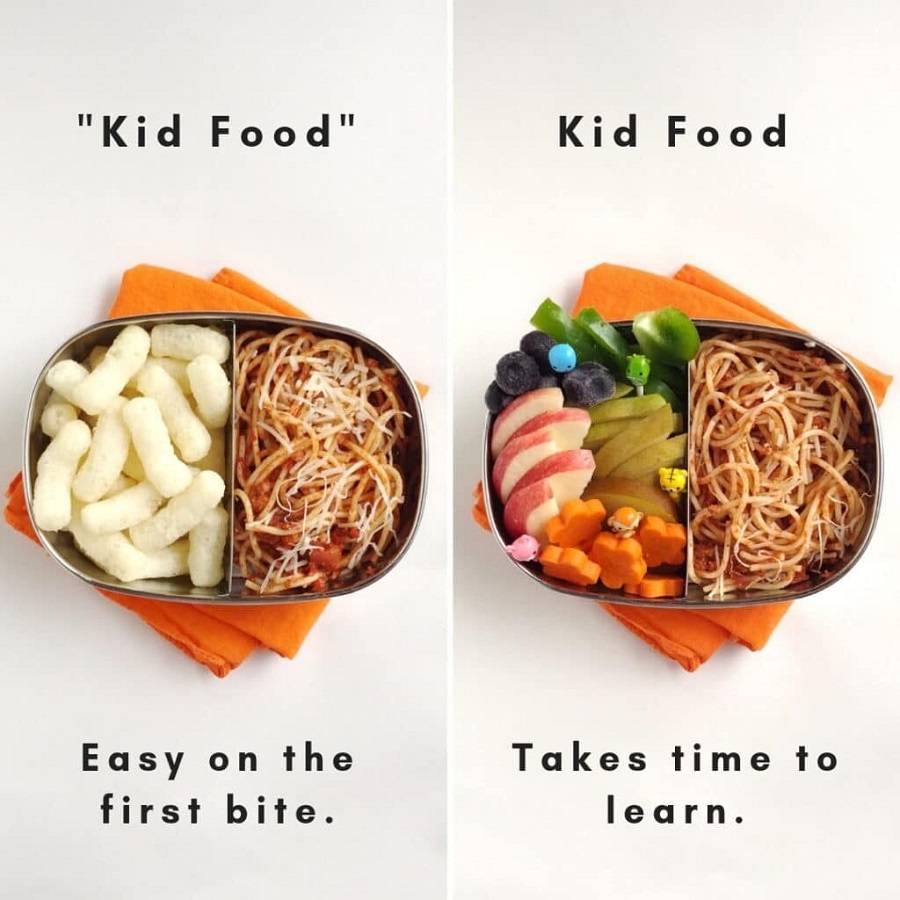Understanding Picky Eating in Toddlers
Understanding picky eating in toddlers is crucial for parents. It starts with knowing why toddlers become picky eaters. Often, it’s a normal stage of development. Toddlers are learning to assert independence, which can include making choices about what to feed themselves. Taste preferences may also evolve, making some foods less appealing. Additionally, their slower growth rate reduces their appetite.
For parents wondering what to feed a picky toddler, it’s essential to recognize this as a phase. Patience is key. Don’t force new foods; this can cause anxiety or a power struggle. Instead, offer a variety of healthy options. Pay attention to their hunger cues, too. Toddlers know when they are hungry and when they have had enough. Over time, their eating habits will likely become more diverse.
Recognize that each child is unique. What works for one may not work for another. You might need to try different approaches to find what suits your toddler. Keep meals positive and stress-free. Remember to model good eating habits. When children see parents enjoying a variety of foods, they are more likely to try them.

Establishing a Positive Mealtime Environment
Establishing a positive mealtime environment is vital for toddlers, especially picky eaters. A stress-free setting at the dining table encourages children to try new foods without pressure. Here are key ways to create this environment:
- Keep it Routine: Set regular meal and snack times. Consistency helps toddlers know what to expect, reducing mealtime struggles.
- Limit Distractions: Turn off the TV and put away toys to focus on eating. A calm space lets toddlers concentrate on their meals.
- Involve Them: Allow your picky toddler to help with simple meal preparations. Involvement can spike their interest in food.
- Stay Neutral: Offer new foods without a fuss. Avoid drama if your toddler refuses something.
- Be Patient: Children may need to see a new food several times before they’re willing to taste it. Patience is crucial.
- Eat Together: Share meals as a family. Your picky toddler observes and learns from others during these times.
The goal is to create a mealtime that toddlers can look forward to. It should be a time for both nutrition and family bonding. Avoid turning it into a battleground over food choices. With a positive mealtime environment, you’ll pave the way for healthier eating habits as your child grows.
Creating a Balanced Diet for Picky Eaters
Creating a balanced diet for picky toddlers is a challenge but not impossible. It requires blending patience with nutrition know-how. A balanced diet should include a variety of foods to deliver the essential nutrients. Here is how you can ensure a balanced diet:
- Introduce Variety: Try different fruits, vegetables, grains, proteins, and dairy. This introduces new textures and flavors gradually.
- Small Portions: Serve small portions to avoid overwhelming your toddler. You can always offer more if they show interest.
- Healthy Choices: Keep healthy options within reach. Replace high-calorie snacks with nutritious alternatives.
- Smart Substitutions: If your toddler dislikes a particular food, find a similar one that they might enjoy.
- Colorful Plates: Make meals visually appealing. Use colorful fruits and veggies to catch their attention.
- Whole Foods: Incorporate whole foods like brown rice and whole wheat pasta. They are packed with nutrients.
- Hydrate Healthily: Offer water or milk over sugary drinks. Keeping them well-hydrated is key to overall health.
Remember, consistency and routine are your allies. With time, your picky toddler might surprise you by accepting a wider range of foods.

Strategies to Encourage Trying New Foods
Encouraging picky toddlers to try new foods can often feel like a daunting task. However, with the right approach, parents can make this process smoother. Here are some effective strategies:
- Offer Choices: Present two or three options and let your picky toddler choose. This tactic gives them a sense of control.
- One Bite Rule: Gently encourage them to take just one bite of a new food before deciding if they like it or not.
- Mix Familiar with New: Pair new items with favorites. This can make the unfamiliar more acceptable.
- Praise Attempts: Acknowledge and praise them when they try something new, even if they don’t finish it.
- Food Games: Turn meals into a fun activity. Create stories or ‘missions’ involving the food to pique their interest.
- Lead by Example: Show enthusiasm about tasting new foods yourself. Your toddler may mimic your actions.
- Reintroduce Foods: If at first they reject a food, try again another day. Children’s tastes can change.
Persistence, creativity, and a little bit of strategy can transform mealtime into an exploration of new tastes for your toddler. Remember, patience is key. Each small step is a victory in expanding their food preferences.
Meal Planning and Recipe Ideas for Picky Toddlers
Crafting a meal plan for picky toddlers requires both creativity and strategy. Here’s how to start:
- Plan Ahead: Devote time each week to plan meals. This avoids last-minute stress and unhealthy choices.
- Keep a Food Diary: Track what your toddler eats. Look for patterns to find what they prefer.
- Involve Your Child: Let them pick foods at the grocery store. It can make them more excited to eat.
- Batch Cook: Prepare large portions of food they like. Use these as bases for quick, healthy meals.
- Be Flexible: Expect some days when your toddler will be more or less picky. Adjust plans as needed.
For recipes, consider these ideas that balance nutrition and appeal for a picky toddler:
- Smoothie Bowls: Blend fruits with yogurt. Top with granola for a fun, spoonable treat.
- Veggie Packed Pasta: Mix pureed vegetables into a tomato sauce with whole wheat pasta.
- Finger Food Platter: Offer cut-up cheese, fruits, veggies, and whole grain crackers.
- Hidden Veggie Chicken Nuggets: Homemade chicken nuggets with grated veggies mixed in.
- DIY Pizzas: Use whole wheat pita as the base. Let toddlers add their choice of toppings.
- Healthy Muffins: Bake muffins with fruits or veggies. Use oats and whole wheat flour.
- Sweet Potato Fries: Baked sweet potato sticks. They’re sweet and nutritious.
- Egg Muffins: Whisk eggs with diced veggies and bake in muffin tins.
With these ideas, stick to the theme of ‘familiar yet new’. It helps to establish a predictable yet varied diet for your toddler. Each success introduces your child to the joy of healthy eating. Remember to use ‘what to feed picky toddler’ as your guide for meal planning.

Dealing with Sweet Tooth: Healthy Treats and Snacks
Toddlers often crave sweets, which can become a hurdle when figuring out what to feed a picky toddler. Yet, it’s possible to satisfy these cravings in a healthy way. Here are some tips on how to deal with a sweet tooth while keeping your toddler’s diet nutritious:
- Fruit-Based Desserts: Offer fresh fruit, which is naturally sweet. You can also make fruit popsicles or bake apples with cinnamon.
- Yogurt Over Ice Cream: Swap out ice cream for Greek yogurt. Add a drizzle of honey or some fresh berries for extra sweetness.
- Homemade Treats: Bake your own cookies or muffins using wholesome ingredients like oats, whole wheat flour, and pureed fruits or vegetables to reduce sugar.
- Dark Chocolate: If you want to introduce chocolate, opt for a small piece of dark chocolate, which has less sugar.
- Sweet Spices: Use spices like cinnamon or nutmeg to add sweetness without sugar in oatmeal or yogurt.
- Smoothie Time: Make smoothies with milk or a non-dairy alternative, frozen fruit, and a touch of honey or maple syrup.
- Nut Butter: Spread almond or peanut butter on whole grain bread or crackers for a fulfilling and sweet snack.
By offering these healthier options, you can help curb your toddler’s sweet tooth while still ensuring they receive the nutrients they need. Stay patient and persistent. Soon, these healthy treats and snacks may become their new favorites.
The Role of Texture and Presentation
When catering to a picky toddler, texture and presentation of food can be as important as taste. Toddlers often judge a food before tasting it, making the visual appeal crucial. Here’s how to make the most of texture and presentation:
- Offer Variety in Textures: Some toddlers may prefer crunchy snacks, others smooth purees. Offering a range of textures can make meals more intriguing.
- Make it Fun: Use cookie cutters to create fun shapes from foods like sandwiches or fruits. Attractive shapes can motivate toddlers to eat.
- Colorful Arrangements: Assemble meals with a variety of colors. A rainbow plate can catch a toddler’s eye and encourage them to eat different foods.
- Interactive Meals: Meals that toddlers can assemble themselves, like tacos or mini pizzas, make eating a fun activity. This can lead to greater food acceptance.
- Small and Manageable: Cut foods into small, bite-sized pieces. This makes it easier for toddlers to handle and less daunting to try.
Remember, when pondering what to feed a picky toddler, how the food looks and feels can be as persuasive as how it tastes. By focusing on texture and presentation, you’re not only catering to their current preferences but also subtly introducing them to the joys of healthy eating.
When to Seek Professional Help: Nutritionist and Pediatrician Advice
When your efforts at home do not seem enough, it might be time to seek professional help. Knowing when to turn to a nutritionist or pediatrician for advice on what to feed a picky toddler can make a big difference. Here are some signs that indicate it may be time to get expert advice:
- Persistent Refusal: If your toddler constantly refuses meals or shows no interest in trying new foods despite your best strategies.
- Weight Loss or Poor Growth: When a lack of appetite leads to noticeable weight loss or a plateau in growth, professionals can offer tailored advice.
- Nutritional Deficiencies: Signs like fatigue or hair loss may point to nutrient deficiencies. A healthcare provider can assess and guide corrective measures.
- Behavioral Changes: If mealtime battles lead to significant stress or behavioral changes in your child, it’s wise to consult an expert.
- Special Dietary Needs: Should your toddler have food allergies, intolerances, or other health issues that require a special diet, personalized guidance is essential.
A nutritionist can help create a meal plan that includes the essential vitamins and minerals to support your child’s development. A pediatrician can monitor growth patterns and identify any underlying medical conditions affecting your toddler’s eating habits.
Don’t hesitate to seek help if you’re concerned. Early intervention can get your toddler on the right track to healthy eating habits, paving the way for a balanced diet as they grow. Remember, you’re not alone in this journey, and professional support can be highly beneficial.
